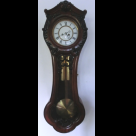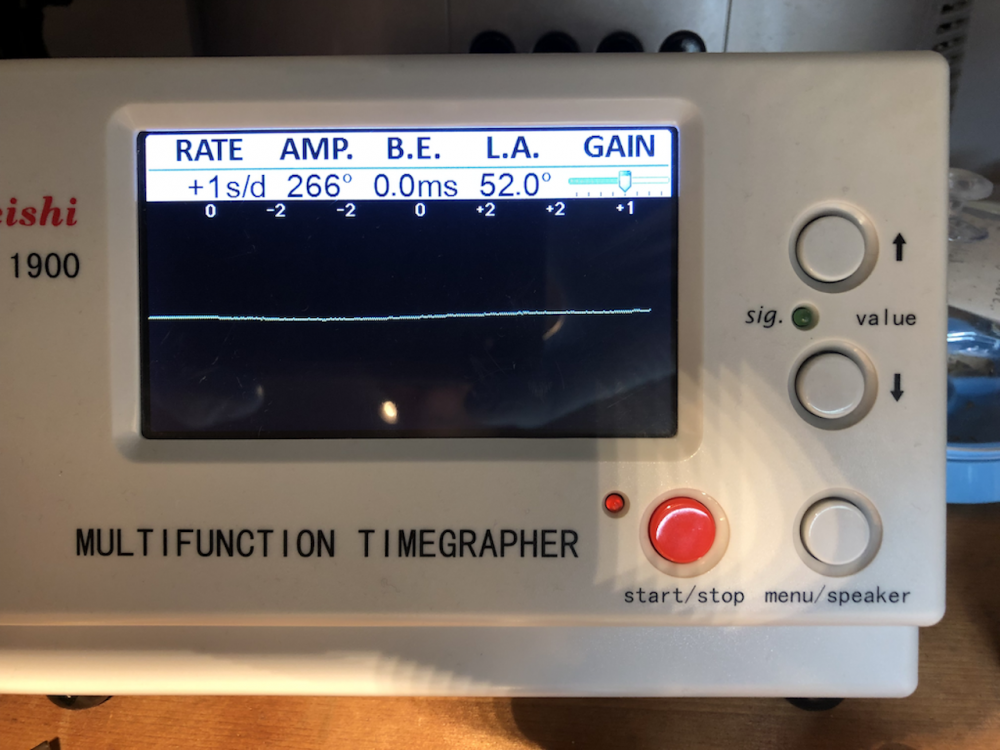Leaderboard
Popular Content
Showing content with the highest reputation on 04/23/19 in all areas
-
I used to advise a reputable Antique shop when it came to buying clocks. As Long case clocks seam to take priority on the forum I will keep to that. The first thing I would look for was its originality in movement and case, certainly the type of wood or woods used and condition. An example a good Mahogany case with good colour is better than an Oak case. A case made of rare wood is better than the previous. A brass dial is better than a White dial (painted dial) Is the movement original to the case? If it is a marriage, leave it alone. Some dealers will say it was married around 150 years ago and is acceptable, I do not agree because it is not original. Any work on the movement has to be good the less the better, don’t bother with altered movements. Look at the case careful to see if it has been altered. Many cases have been shortened, many years ago the clock would be standing on a stone floor and it would get wet from damp and regular floor washing, the damp or rotting wood would be sawn off. Always look at the bottom of the case. Marks inside the case can help, such as rubbing on the inside of the back, is it in line with the pendulum. Bottom inside ledge for the door are there rubbing marks due to the weights constantly going up and down and catching on the ledge, do they fit to the shape of the weights, if so that is a sign of originality. What about the hinges of the door, extremely old cases they will be fixed by nails not screws, nails back then were nothing like we use today. The same goes for the lock for the door. Any part that has modern screws be aware. Brass dials fit directly to the movement and normally by four pillars. White dial or painted dials have what is called a false plate between the back of the dial and the movement, if not then there is something amiss. Even the glass can tell you something, if it has blemishes and is thicker in places it is telling you it is very old and could be as old as the clock or it has been replaced a very long time ago. Look at the way the glass has been fixed. Hands are most important with experience you can tell if the hands are, correct with the period of the dial. An example if the clock has a seconds hand and the clock dates back to the early 1700 century the hand will be plain and small. The pillars of the clock pay an important part you can date the movement by their design. The clock maker depending who he is will play a huge part when it comes to value, It is experience as to how much the clock is worth and its demand. This is just a small part of how you determine the value of a Long case clock. I hope you find it useful2 points
-
2 points
-
This well know and done always identically. He lists any possible desirable item by copying the listing with the lowest price, but with a 15% discount. As seller name he places "do not buy - contact [email protected]", that changes often . He answers email swiftly telling that because of a bug Amazon will process the order manually and send an invoice for bank transfer payment. To add a bit of credibility he waits the following day to send the fake Amazon invoice with a reply address as amazon.it.259348523592638952348752892.023789465298359283685922632.com and the beneficiary details IOAN STELIAN MAILAT (a Romanian name) IBERCAJA BANCO, S.A. IBAN ES4920855687250330432670 BIC/SWIFT: CAZRES2Z SPAIN REF: 403-3508465-3272433 That's all I needed to flag domain name to the registrar, and provide the details to Spanish Police. Shame on you Ioan and your accomplices!1 point
-
Be very careful when offered any "alternative" method of payment for any online transaction. One other thing to be aware of, any domain that contains a subdomain. For example. "amazon.it.259348523592638952348752892.023789465298359283685922632.com" The domain here is not Amazon, or indeed anything to do with Amazon. Domains read from right to left, and should match the primary company domain. In the case of Amazon, generally things should end in amazon.com (ebay is slightly different, and can be ebay.com or ebay.{country_suffix} for example ebay.co.uk or ebay.ca etc.) Anything between the suffix and the company name is a red flag, so amazon.wibble.com is likely to be fraudulent. Also be aware that *ALL* genuine e-comerce sites use an https: prefix rather than http: If in doubt, some suggest the use of a link checker - for example https://www.urlvoid.com/ however, these are not reliable. Finally, for any online transaction, or in response to any email, never, ever give out pin numbers or bank account details in response to any request. Banks will never ask for these, and nobody else should ever need them.1 point
-
If you’re handy you might be able to replicate this handy tool. Rolex make a “casing up” movement holder. It has a pin to engage the stem release and a bump to grab a notch in the movement so it locks in. You never need to flip the movement or case upside down. Horia make them too: https://www.horia.ch/en/Products/Stem-pusher/Tool-for-removing-stem-for-cal-ETA-2824-2.html1 point
-
To be honest , I forgot how to set this particular watch, because of the inner rotating ring , but I better find out pretty soon because I just got the exact watch as yours a couple of weeks ago but I haven't messed with it yet . Kind of a poor excuse since I used to own one of these when I first started collecting a few years ago .1 point
-
I would put an 8 day Regular movement in it, it costs a bit more than 1 day, however it is worth it.1 point
-
Hi there you are Noirrac has turned up trumps that's the good thing on this site somebody always knows the answer.1 point
-
1 point
-
Horological lubrication is quite a fascinating subject. Unlike some things in watch repair that haven’t really changed in the last hundred years horological lubrication seems to always be changing. As this particular discussion demonstrates lubrication of the pallet fork pivots sometimes they do sometimes they don’t. Then the choice of lubrication’s typical responses look at the tech sheet. But the various watch companies typically all have differing recommendations and those recommendations almost always have changed with time. Then there is the missing information such as surface treatment and other stuff. Or the assumption whoever’s reading a technical guide is a professional watchmaker that knows what they’re doing. Of course we all have our personal choices and thoughts on the subject which very likely could all be different. The original title of this discussion was lubrication of the pivots the pallet fork that generally is an easy subject in that it’s usually frowned upon at least by the Swiss. Oiling of the rest of the escapement can get quite interesting. This is where time is an interesting thing or when the technical sheets came into existence. For an example of this I pulled out a couple of older Swiss technical guides and the earlier one is recommending 9020 for the pallet stones. A couple years later they switch to 941. Then I don’t remember how many years before 9415 comes into existence but it will show up eventually. Then when it does its typically for the higher frequency watches as it stays in place better. But with time even on lower frequency of 18,000 BPH watches you’ll see either or recommendation. Currently everyone seems to going just to 9415. So did you think this was confusing at all? Did you wonder what I meant by missing information other than surface treatment? Omega’s an interesting company over the years they’ve had technical information separate from their normal technical guides. Working instruction number 40 is quite interesting for instance it’s on lubrication and I’ve attached the PDF to this message. I think you'll find starting on page 13 quite interesting.. CousinsUK.com Omega 8645_WI_40_rules for lubrication.pdf1 point
-
I have both and prefer tin. Some folks add a little silver to the tin (I've heard between 1-5%) for a little more hardness; I have a couple and also pure tin and can't tell a huge difference. Just avoid lead or tin/lead alloy. The lead is toxic and its oxide is just abrasive enough to make polishing next to impossible. What's more important than composition is that the block be flat and not too smooth (rough lathe finish or scratch it up with a file), and not too much polishing paste. It needs to get almost dry to hit the black polish.1 point
-
It was very erratic and hard to quantify. But I'd say around 10% of the beats were completely wrong. The replacement escape wheel and pallet fork arrived. Fitted today and wow, what a difference. I put the escape wheel under the microscope to compare it to the old one and yeah it was completely worn. Thanks everyone for the advice.1 point
-
Hi Watch hands are usually only fitted once when new and when repairs are done, constant fitting and re fitting can stress the boss closing is possible but not always sucessfull . not something I would do myself. Not all seiko canon pinnions and hour wheels are the same size, close maybe, check the part numbers for the models you are using against the tech sheets.1 point
-
0 points










